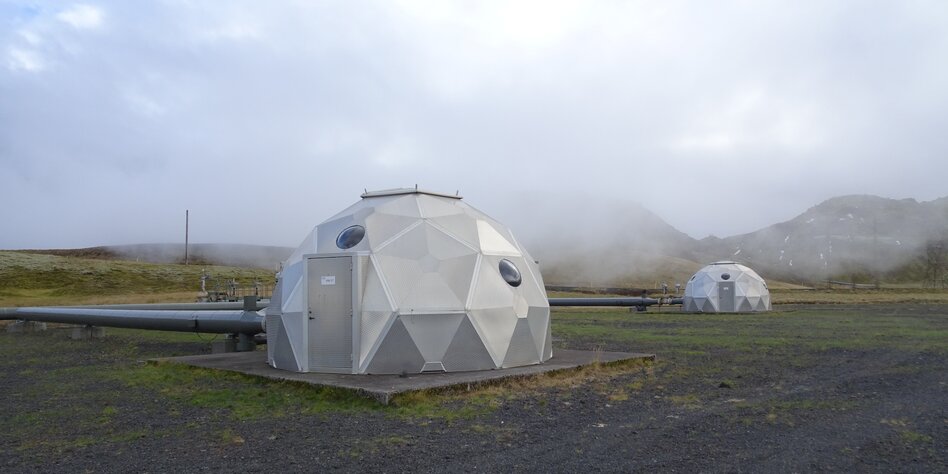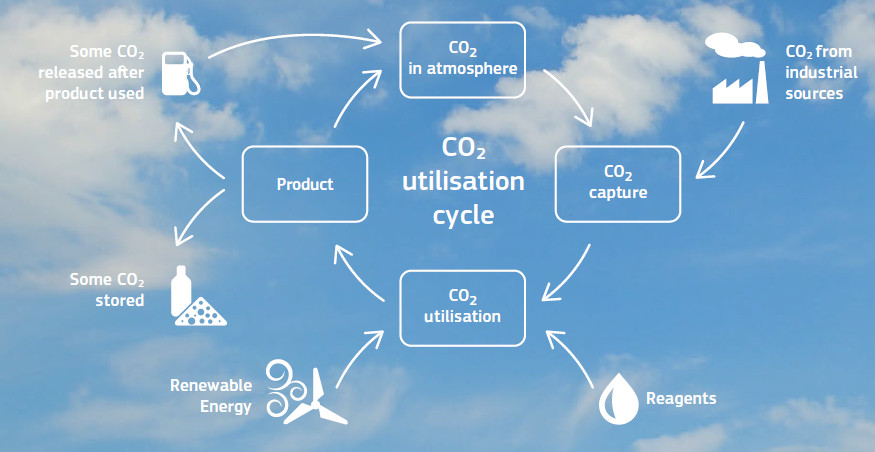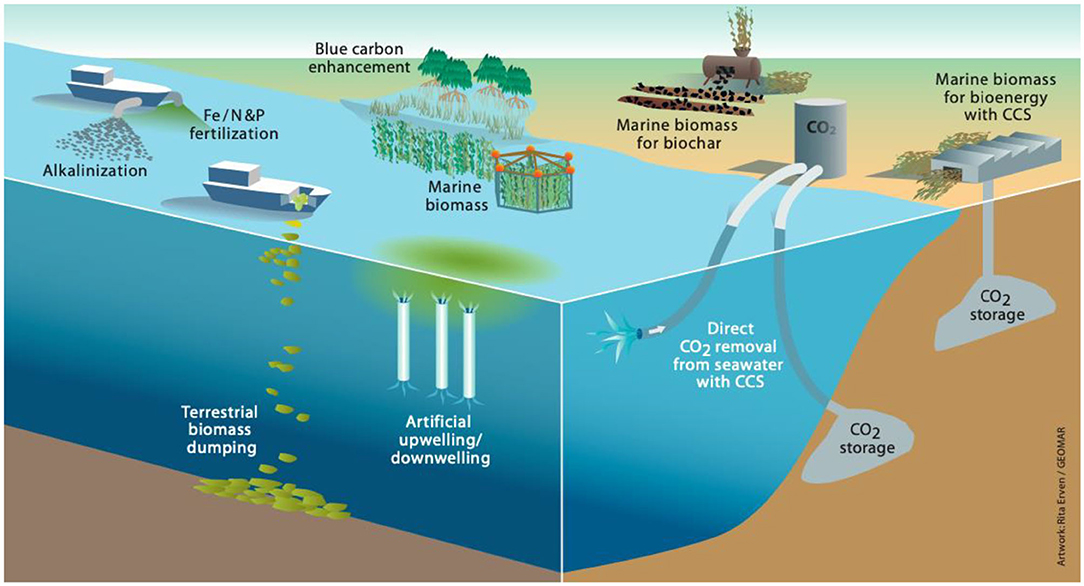In the ongoing race against the climate crisis and to achieve the Net Zero targets stipulated in the Paris Agreement, a diverse range of strategies and technologies must be deployed. While nature-based approaches still play a crucial role in emissions reduction and carbon elimination, the imperative lies in developing and implementing solutions at a much larger scale than the current status quo, to amplify their effectiveness. The urgency for technological solutions becomes increasingly apparent, accompanied by the concerted effort to explore various innovative methods to shape a sustainable future free from carbon emissions.

Carbon Removal and Emission Reduction through Innovative Technological Solutions
1. Carbon Capture and Storage (CCS):
As the foundation of modern Net Zero technology, CCS encompasses four fundamental steps involving gas capture, transportation to storage sites, injection into storage reservoirs, and ensuring complete CO2 isolation. In general, CCS technology carries out the retrieval and storage of gases within containment systems instead of releasing the accumulating CO2 into the atmospheric layer on a daily basis.

Carbon capture and storage facility in Iceland
Advantages
Carbon Emission Reduction: CCS represents a robust solution for reducing carbon dioxide emissions from fossil fuel sources like coal and oil. By capturing these emissions at the source and storing them in secure facilities, CCS helps significantly mitigate the release of carbon dioxide into the atmosphere.
Safeguarding Challenging Industries in Transition: CCS enables high-emission industries such as steel and cement to continue operations without causing a substantial increase in carbon dioxide emissions.
Disadvantages
Cost: CCS can demand substantial financial and time investments. Constructing and maintaining effective and secure carbon storage facilities can be expensive, making CCS financially challenging for many countries and businesses.
Storage Risks: Despite designed safety measures in storage facilities, there's still a risk of carbon dioxide leakage from containment sites. Improper management of leaks could pose environmental and health hazards.
Dependency on Fossil Fuels: CCS relies on capturing carbon dioxide emissions from fossil fuel sources. This means it doesn't address the underlying issue of carbon emissions from non-renewable energy sources. In the grand scheme, the overall CO2 levels on Earth remain unchanged.
Temporary Solution: While CCS holds the potential to significantly reduce carbon emissions, it cannot fully replace transitioning to cleaner, renewable energy sources. CCS should be viewed as part of a sustainable development strategy, rather than a sole solution.
2. Carbon Capture and Utilisation (CCU):
In addition to CCS, CCU revolves around the application and utilization of carbon dioxide captured from fossil fuels. However, unlike CCS, CCU doesn't primarily focus on permanent storage; instead, it involves using the captured carbon dioxide to create higher-value substances or products, such as plastics, concrete, or fuels, while still maintaining carbon neutrality within the production process. CCU plays a significant role in maximizing existing raw materials and preventing further resource extraction.

Advantages
Utilizing Carbon Emissions: CCU enables the reutilization of captured carbon dioxide from fossil fuel sources to generate valuable products and services. This reduces carbon emissions into the atmosphere and maximizes resource utilization.
Risk Mitigation: While CCS focuses on permanent carbon storage, CCU avoids the need for long-term storage, thus sidestepping safety and storage-related issues.
Promoting Circular Economy: CCU contributes to circular economic models by repurposing carbon dioxide to create materials and products. This minimizes reliance on new resources and fosters economic sustainability.
Adaptability: CCU can be flexibly adjusted to produce different products and applications, ranging from renewable fuels to building materials and food. This diversity offers adaptability to this technology.
Disadvantages
Limited Applications: CCU might face limitations in generating high-value products and large-scale use of carbon dioxide.
Technology Dependency: The performance and feasibility of CCU heavily rely on existing technologies. Advancements in these technologies can influence CCU's developmental potential.
Environmental Impacts: Although CCU can reduce carbon emissions, the production and use of products from carbon dioxide could also have distinct environmental impacts. A careful examination is necessary to ensure CCU doesn't introduce new environmental concerns.
3. Carbon dioxide removal (CDR):
CDR aims to achieve the complete and long-term removal of CO2 from the atmosphere through deliberate human activities and sustainably store it in geological, terrestrial, or ocean reservoirs, or in products. Broadly, this innovative mechanism captures carbon dioxide from the atmosphere and ensures sustainable storage through processes like mineralization or geological storage. Unlike CCS, CDR removes carbon from the air, rather than directly attaching to smokestacks in coal-fired power plants or cement factories. CDR technology is pivotal in achieving net zero goals and even moving towards net positive emissions.

An overview of carbon dioxide removal strategies in the marine environment
Advantages
Comprehensive Carbon Emission Reduction: CDR focuses on removing carbon dioxide from the atmosphere, effectively reducing greenhouse gas emissions. Technologies like Direct Air Capture and Storage (DACCS) or Bioenergy with Carbon Capture and Storage (BECCS) have the capability to achieve permanent carbon dioxide removal.
Addressing Challenging Emissions: CDR helps tackle difficult-to-avoid carbon emissions, such as those from heavy industries or transportation.
Disadvantages
Environmental Risks: While having the potential for carbon removal, the processes of carbon dioxide storage or mineralization could potentially have negative environmental impacts if not executed carefully. Ensuring CDR technologies are deployed without harming ecosystems is crucial.
Cost: CDR requires significant financial investment to develop and implement carbon dioxide removal technologies. Infrastructure construction and operational costs can pose challenges for widespread adoption.
Economic Efficiency: Some CDR technologies might not be economically efficient compared to alternative solutions like transitioning to renewable energy. Thoughtful consideration of economic efficiency is necessary.
Land Use Competition: CDR technologies can compete with land use for food production or ecosystem preservation. Careful consideration is required to avoid land use conflicts.
Conclusion
In the quest for a sustainable future, achieving Net Zero goals requires a continuous search for innovative technologies. Carbon storage and removal, combined with advanced carbon dioxide utilization and removal methods, play a crucial role in mitigating the impacts of climate change. Leveraging these breakthrough solutions paves the way for a world free from carbon emissions, underscoring the significance of technological innovation and collaboration in building a resilient and environmentally conscious planet.